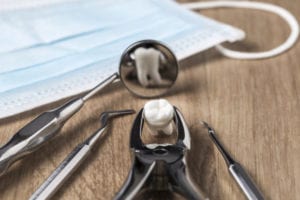 It’s estimated that as many as 85 percent of Americans have had their wisdom teeth removed. Wisdom teeth often crowd the mouth, force misalignment between other teeth, and painfully erupt through the gum line, which can lead to infection.
It’s estimated that as many as 85 percent of Americans have had their wisdom teeth removed. Wisdom teeth often crowd the mouth, force misalignment between other teeth, and painfully erupt through the gum line, which can lead to infection.
Wisdom tooth removal is a rather routine procedure, but it can be intimidating.
The idea of pain and restricted eating is simply too much for some people. Knowing and understanding these tips for recovery can make the process much easier – and more pleasant.
Step One: Plan Ahead
The first step for recovery begins before the procedure even starts. You need to talk to your surgeon and familiarize yourself with the process. Ask questions about things you don’t understand or about which you are unsure. Your surgeon can give you an idea of what to expect – which can also help calm your nerves.
Step Two: Grocery Shop
This step should also happen before you have your procedure. Remember that you should eat liquids immediately after surgery, then gradually introduce soft foods (such as mashed potatoes and pudding) before leading up to regular choices. You should also avoid anything spicy, sticky, or particularly hard while you’re recovering. You need to make sure your cabinets are stocked with smart choices so you don’t hurt your mouth.
Step Three: Rest
After your procedure, you need to take it as easy as possible. We understand that you want to return to a normal life quickly, but the more relaxed you are during the first few days, the better your healing process.
Step Four: Flex Your Jaws
The last thing you probably want to do after wisdom teeth removal is open and close your mouth, but there’s usually a significant degree of stiffness when you’re resting your jaw and not chewing. It’s important to exercise your jaw by flexing slowly and gently a couple of times per hour. Without the proper attention, the stiffness could become permanent.
Step Five: Do Saltwater Rinses
Saltwater rinses are a great way to promote healing. They work to prevent bacteria from forming and reduce inflammation without the sting of some other rinses. Mix one-quarter to one-half teaspoon of iodine-free salt to one cup of warm water. Swish gently for 30 seconds after every meal.
Step Six: Listen to Your Surgeon
When your surgeon gives you healing advice, remember that he knows the specific conditions of your mouth and understands the extent of your surgery. You should always closely follow his instructions and always call or make an appointment if you have a question or concern once the procedure is finished.
The information and content on our website should not be used as a substitute for medical treatment or advice from your doctor.









